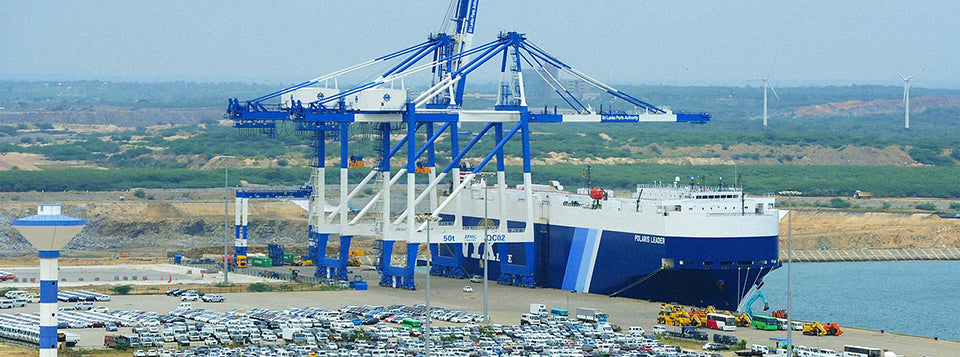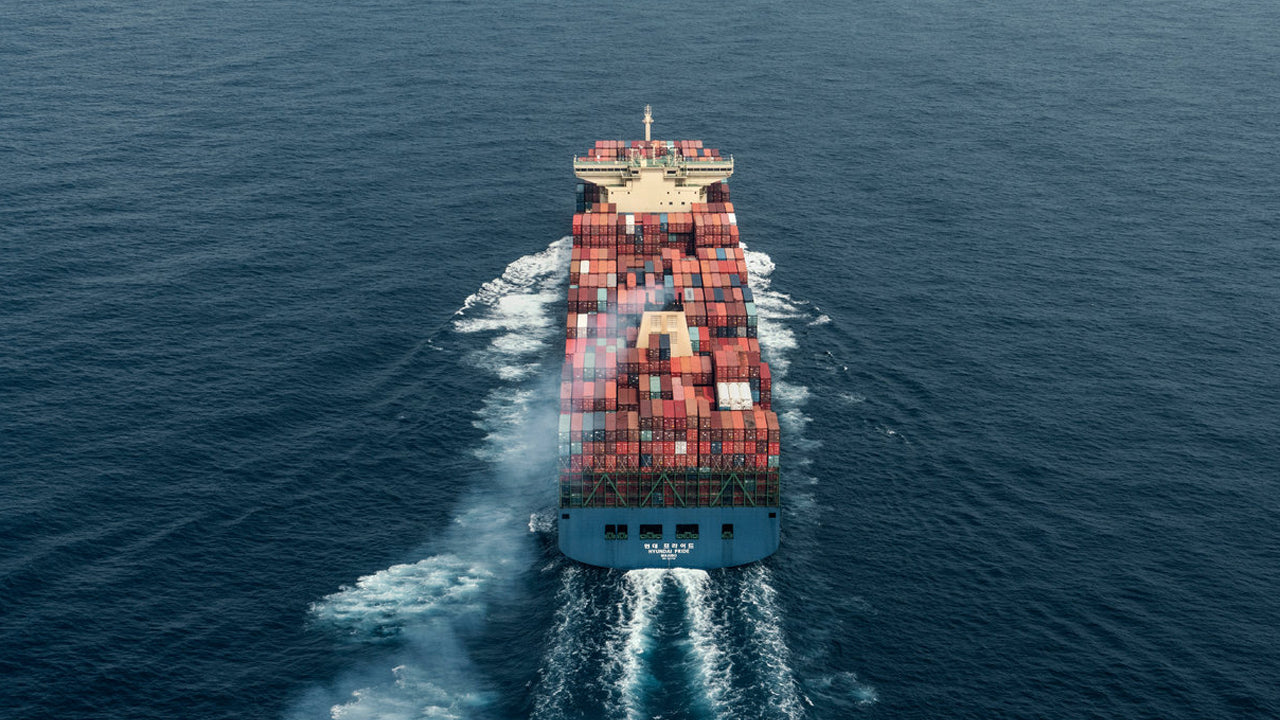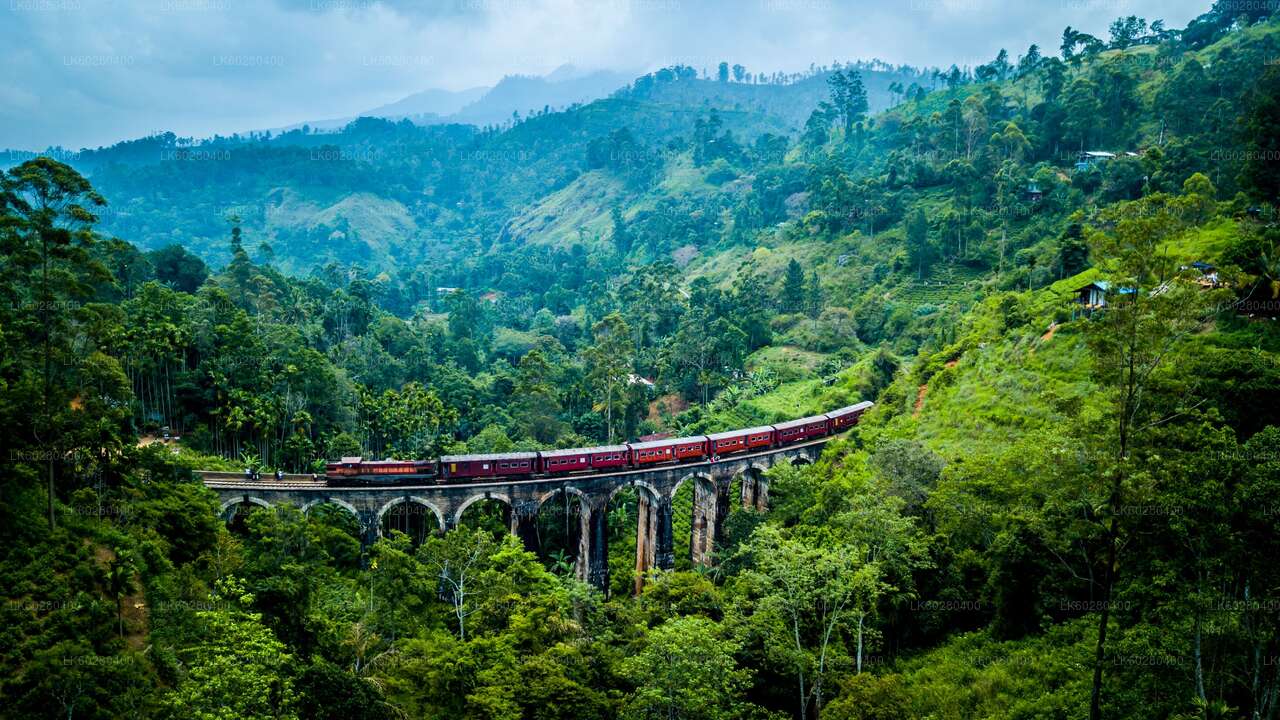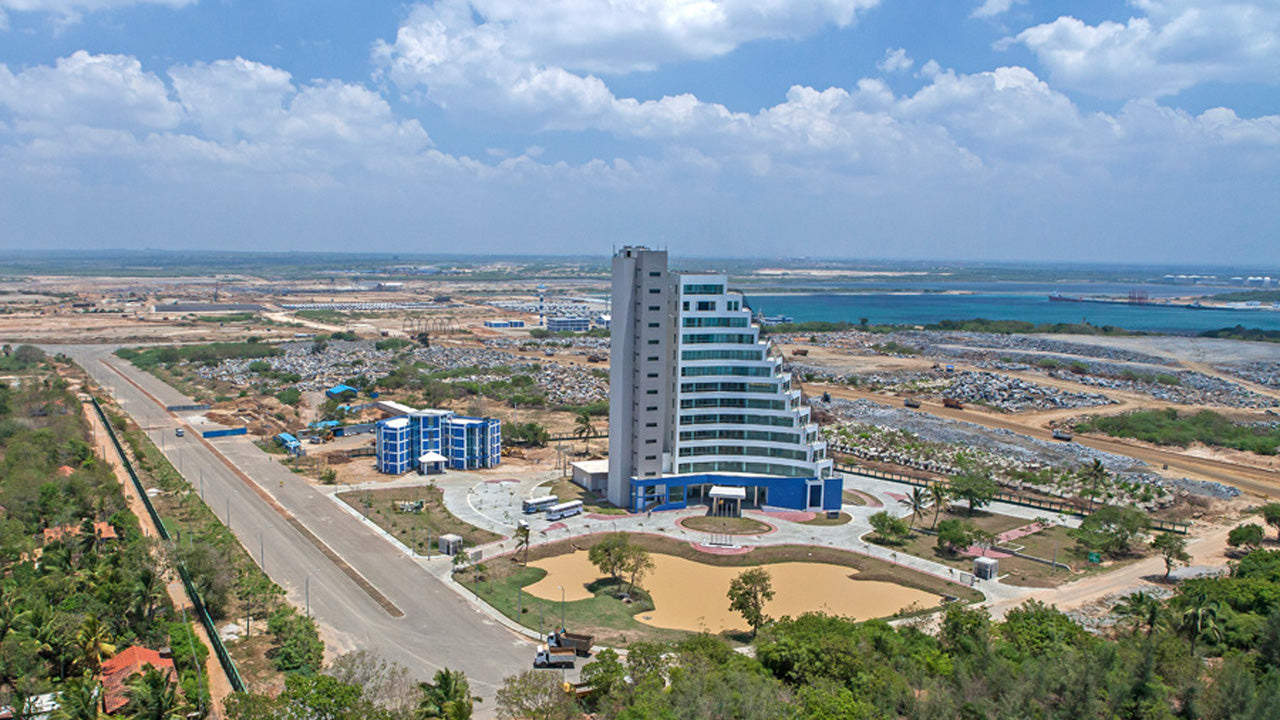
Port morski Hambantota
Port morski Hambantota, strategiczny port morski na południowym wybrzeżu Sri Lanki, sprzyja globalnemu handlowi i rozwojowi gospodarczemu. Dzięki najnowocześniejszym infrastrukturom, pełni funkcję kluczowego węzła przeładunkowego, łączącego Azję ze światem. Odkryj dynamiczne możliwości i istotną rolę, jaką odgrywa w handlu regionalnym.
Port morski Hambantota
The Hambantota International Port (also known as the Magampura Mahinda Rajapaksa Port or the Magam Ruhunupura Mahinda Rajapaksa Port) is a deep water port in Hambantota, Sri Lanka. It opened on 18 November 2010 and is operated by Hambantota International Port Group (HIPG), a joint venture between the Sri Lanka Ports Authority and the partially Chinese state-owned China Merchants Port Holdings.
The Hambantota port is Sri Lanka's second largest port, after the Port of Colombo. In 2020, the port handled 1.8 million tonnes of LPG and dry bulk cargo.
Construction of the port commenced in January 2008. The Port of Hambantota serves ships travelling along the east-west shipping route that passes six to ten nautical miles (19 km) south of Hambantota. Later phases will increase the port's capacity to 20 million TEUs per year. However, the Hambantota port in 2016 made a revenue of US$11.81 million and incurred expenses of US$10 million as direct and administrative costs to report an operating profit of just US$1.81 million.
Down in the sunny south of Sri Lanka sits a special place called the Hambantota Seaport. It's like a big door that helps Sri Lanka trade with other countries all around the world. Made with help from China, this port is super modern. Big ships full of stuff like toys, clothes, and food can come and go easily. It's like a big hub where things can move from one ship to another, making trade faster and smoother.
But, there have been some problems along the way. Some people worry that Sri Lanka might owe too much money to China because of building the port. However, Sri Lanka is still hopeful about the port's future. Besides just moving stuff around, the Hambantota Seaport is also creating new jobs and opportunities for people nearby. They're planning to build new places where companies can work and store things, which will bring even more jobs to the area. So, even though there have been some bumps in the road, the Hambantota Seaport is still sailing ahead, bringing hope for a better future for Sri Lanka's southern region.
O dystrykcie Hambantota
Hambantota to niewielkie miasteczko położone na południowo-wschodnim wybrzeżu Sri Lanki. Jest również stolicą dystryktu Hambantota w prowincji Południowej Sri Lanki. Położone około 240 km od Kolombo, Hambantota przekształca się w strategiczny port i centrum handlowe, przechodząc intensywny rozwój infrastruktury. Otoczone rozległymi piaszczystymi plażami, Hambantota jest dogodną bazą wypadową do zwiedzania okolicznych atrakcji.
Park Narodowy Bundala leży 20 km na wschód od Hambantoty, a Sanktuarium Weerawila nieco dalej. Park Narodowy Ruhuna i Świątynia Kataragama to kolejne atrakcje, do których można łatwo dotrzeć z tego miasta.
O prowincji Południowej
Prowincja Południowa Sri Lanki to niewielki obszar geograficzny obejmujący dystrykty Galle, Matara i Hambantota. Głównym źródłem dochodu dla zdecydowanej większości mieszkańców tego regionu jest rolnictwo i rybołówstwo.
Do ważnych zabytków Prowincji Południowej należą rezerwaty przyrody w parkach narodowych Yala i Udawalawe, święte miasto Kataragama oraz starożytne miasta Tissamaharama, Kirinda i Galle. (Chociaż Galle jest starożytnym miastem, z okresu przed inwazją Portugalczyków nie przetrwało prawie nic). W okresie portugalskim działało dwóch słynnych syngaleskich poetów: Andare z Dickwella i Gajaman Nona z Denipitiya w dystrykcie Matara, którzy tworzyli poematy o zwykłym człowieku.









